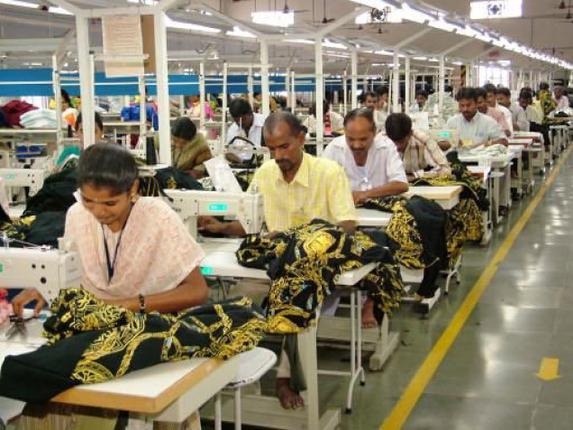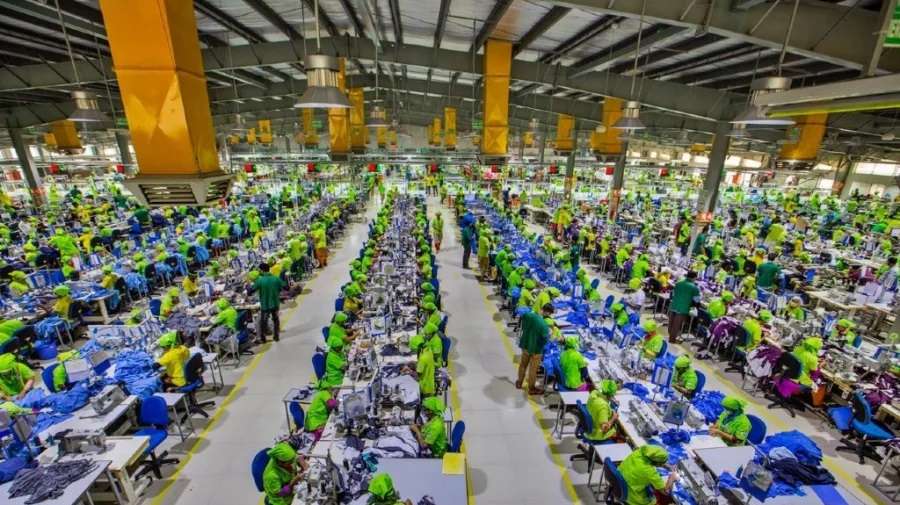
Though a slowdown in China, political unrest in Bangladesh and labour and other issues in Vietnam gave an opportunity to Indian textile exporters, the segment managed to expand its performance rate by just 8.2 per cent over the last three years. While the average annual growth rate of Chinese textile and clothing exports slowed to 6.1 per cent since 2012 from as high as 20.1 per cent in 2011, India’s average expansion rate is just 8.2 per cent against 15.8 per cent reported by Vietnam since 2012. Even Bangladesh, despite all the challenges it has been facing, the country has managed a growth rate of 7.8 per cent

Industry experts have blamed lack of incentives, excessive emphasis on cotton fibre and handlooms by the government, flip-flop in raw material policy, faulty duty structure in the man-made fibre segment where imports of certain raw materials like PTA are taxed higher than those of finished products and inflexible labour laws as hurdles to the growth of the textile and apparel sector. The withdrawal of certain export incentives in the recently-announced foreign trade policy 2015-20 will further have a negative impact. However, experts believe that players must stop depending on government sops and focus on investing in modernisation and consolidation of the supply chain to take advantage of the ensued opportunity.
Rise in exports boosts industry’s spirit Driven by a weak rupee and strong overseas demand, textile exports from India increased to $27,699.9 million in April-December, 2014, up from $26,431.54 million in the corresponding period of the previous year, registering a rise of 4.80 per cent. Majority of the segments in the sector registered growth in the range of 7-35 per cent. Readymade garments (RMG), which accounts for nearly half of all textile exports, grew by 21.81 per cent at $395.47million, while made ups grew by 3.27 per cent at $385.32 million. Also, fabric waste segment recorded 34.38 per cent growth.
India is expected to consolidate its position in the coming years. According to the Ministry of Textiles, the domestic textile and apparel industry in India is estimated to reach $141 billion by 2021 from $58 billion in 2011. Apparel exports from India are expected to increase to $82 billion by 2021 from $31 billion in 2011.
After the Narendra Modi-led government took charge at the Center, there were a lot of expectations. The government was able to garner attention through its Budget announcements with a proposal of setting up a few mega textile clusters with a fund allocation of Rs 200 crores. The recent approval of GST, is expected to rollout an ambitious indirect tax reform and expected to raise revenues and boost growth.
After the completion of the 100 days at the centre, the government launched an ambitious new initiative to promote domestically manufactured products and attract investments. ‘Make in India’ campaign covering 25 sectors, including the textile and garment industry, was unveiled by the Prime Minister in the presence of industrialists and biggies from the corporate world of India and abroad at a ceremony in New Delhi.
Impediments to growth
While global textile sourcing is shifting towards India and China, there is a rise in global machinery companies building their manufacturing units in the country posing direct and stiff competition for the homegrown players, who are far behind in bringing the level of technology used by their global counterparts. Lack of proper infrastructure, high power costs are some of the other hurdles to growth. Unlike China and Bangladesh, which have developed large production units, India lacks such set-ups that can cater to large orders and rising demand making it lag behind in the competition.
The textile sector has also not got its due under the new Foreign Trade Policy (FTP) despite it being one of the largest employment providers in country. According to Cotton Textiles Export Promotion Council or (TEXPROCIL) the industry faces the challenges of high tariffs barriers on account of preferential tariff arrangements. Duty sops of 2 per cent only granted to the mainstream cotton textile products, while higher rates were given for handlooms, carpets, coir products under the merchandise exports from India scheme (MEIS). Further, man-made textile industry which is highly capital intensive and the only sector capable of attracting FDI has been discriminated against vis-à-vis the cotton industry. The sector which can help the government achieve its ambitious target has not been mentioned in the list of items granted liberal MEI’S benefits under the FTP announced on the first of April.
MMF textiles that contributes Rs 7,000 crore as taxes and holds high potential has been given lower reward in the FTP’s new scheme. For Europe and the US, MMF products have been given lower incentives as compared to cotton textiles. Further, the benefits for promoting exports to major emerging markets for MMF textiles such as Latin America, Far East and African countries have been completely stopped in the new FTP without giving the sector’s exporters any scope for adjustment.
“So far India has failed to grow beyond its traditional strength in apparel exports. We are not looking seriously at product expansion, category expansion, and market expansion. We are too much dependent on our traditional strengths. To grow exports, India needs to look at new markets and have a broader product basket. We should move away from cotton based and summer based exports. Capacity should be used around the year that will reduce cost of operations, increase profitability and turnover,” avers Rahul Mehta, President, IAF and CMAI.












